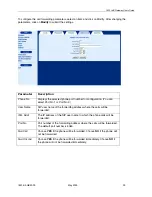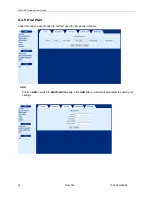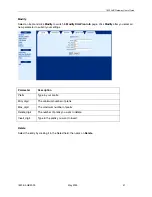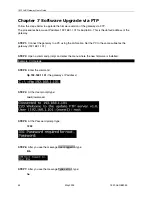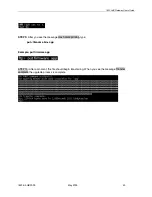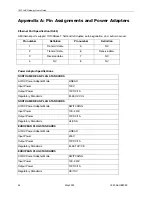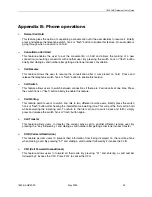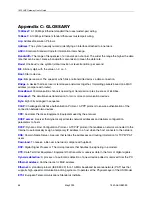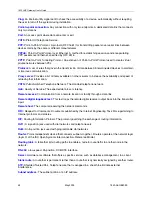
1823 VoIP Gateway User’s Guide
Ping:
An internet utility signal sent to check the accessibility of a device. automatically without requiring
the user to turn off the system during installation.
Point-to-point connection:
Any connection with only two endpoints. A dedicated data link that connects
only two stations.
Port:
An access point where data can enter or exit.
POTS:
Plain Old Telephone Service.
PPP:
Point-to-Point Protocol. A protocol (RFC 1661) for transmitting packets over serial links between
devices made by the same or different manufacturers.
PPPoE:
Point-to-Point Protocol over Ethernet. A method for establishing sessions and encapsulating
PPP packets over Ethernet, specified by RFC 2516.
PPTP:
Point-to-Point Tunneling Protocol. An extension of Point-to-Point Protocol used to create virtual
private networks between PCs.
Protocol:
A set of rules that govern the transmission of data between interconnected devices to maintain
or improve communication.
Proxy server:
Provides a list of items available on other servers to increase the availability and speed of
retrieving that information.
PSTN:
Public Switched Telephone Network. The standard telephone network.
QoS:
Quality of Service. The expected data loss or latency.
Remote access:
Communication from a remote location or facility through a data link.
Remote digital loopback test:
This test loops the remote digital receiver output back into the transmitter
input.
Remote host:
The computer receiving the network commands.
RFC:
Request for Comments. Documents published by the Internet Engineering Task Force pertaining to
Internet protocols and policies.
RIP:
Routing Information Protocol. The protocol governing the exchange of routing information.
RJ11:
A 6-position jack used with dial networks and telephone sets.
RJ45:
An 8-position jack used with programmable dial networks.
Router:
Protocol-dependent device that connects subnets together. Routers operate at the network layer
(layer 3) of the ISO Open Systems Interconnection--Reference Model.
Routing table:
A table that lists routing paths to enable a node to route traffic to another node in the
network.
RS-232:
a low-speed, 25-position, DCE/DTE interface.
Server:
Hardware or software that offers a specific service, such as database management, to a client.
Static route:
A route that is permanent rather than a route that is dynamically assigned by another router.
STP:
Shielded Twisted Pair. Telephone wire that is wrapped in a sheath to eliminate external
interference.
Subnet address:
The subnet portion of an IP address.
48 May 2005 1823-A2-GB20-00






